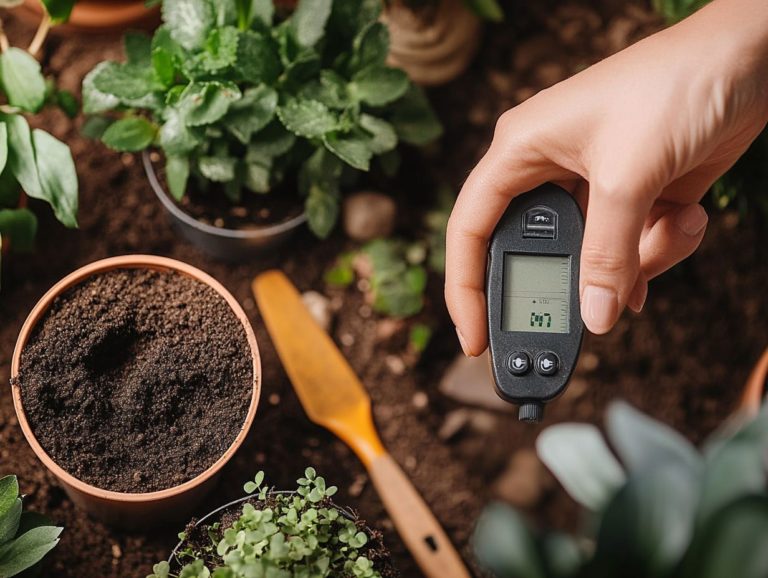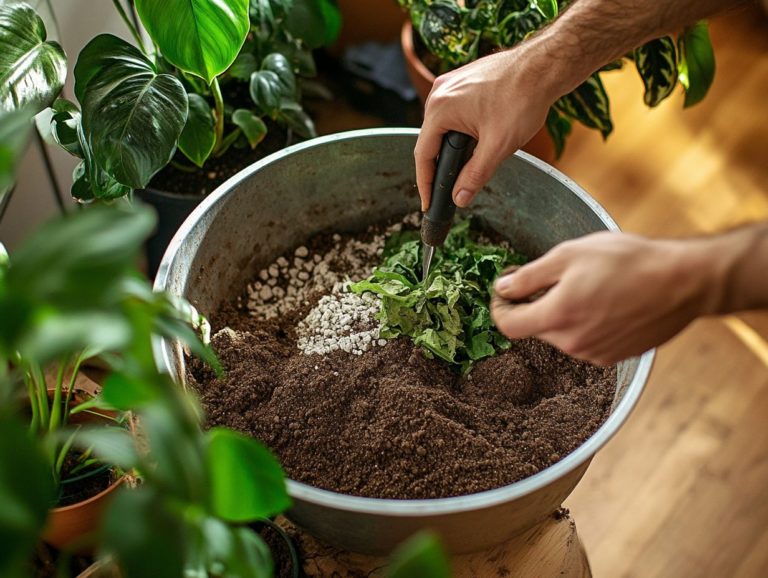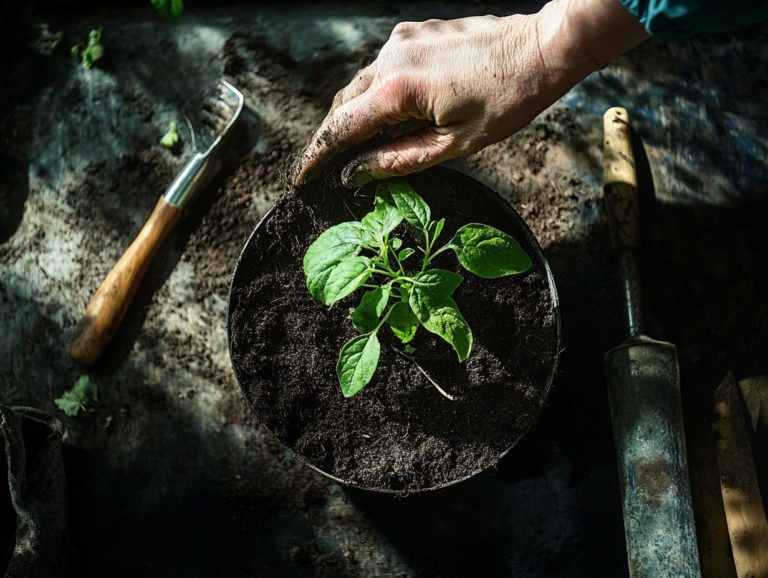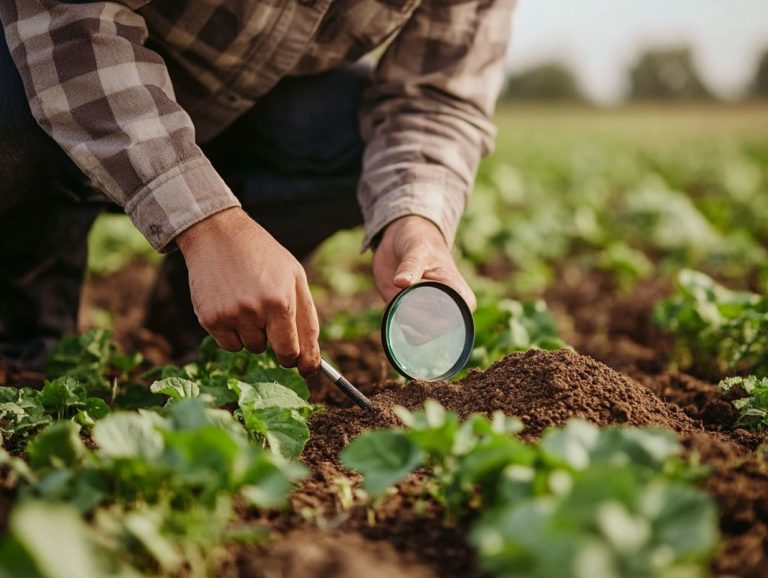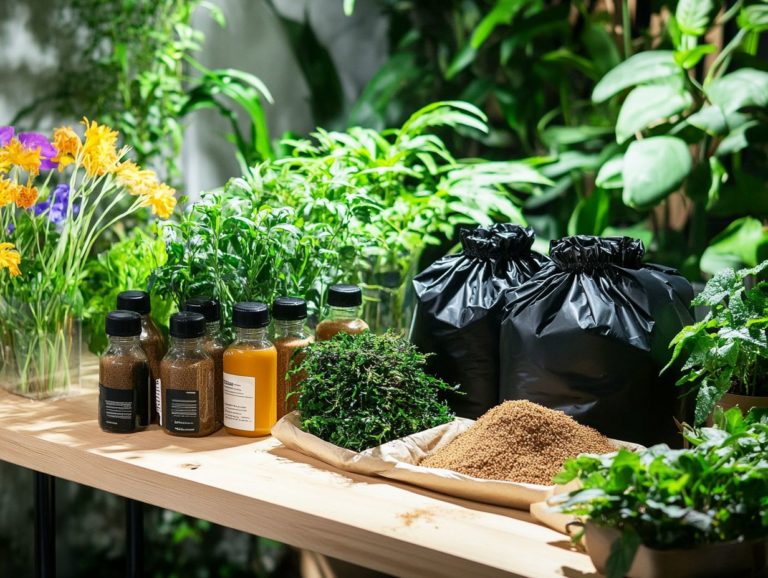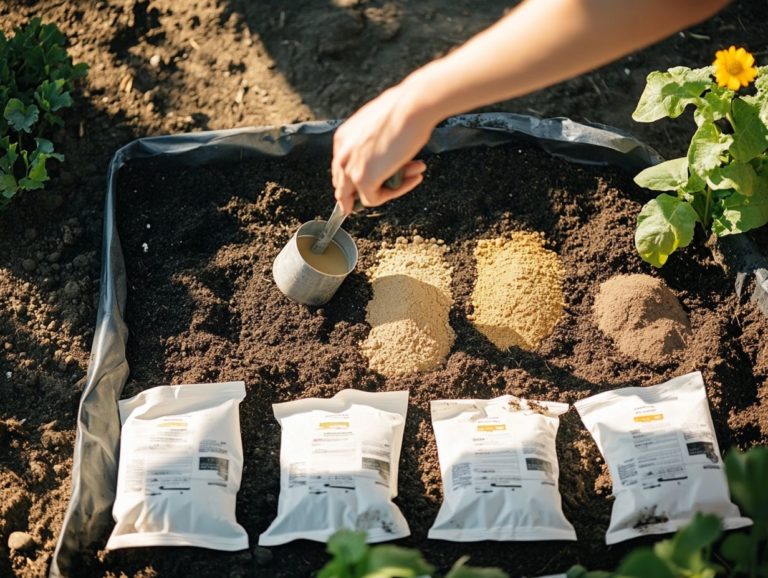Understanding the Role of Sand in Potting Mix
Creating the perfect potting mix is crucial for nurturing healthy plants. One ingredient that often slips under the radar is sand.
This guide delves into the importance of sand in potting mixes. It highlights its vital role in enhancing drainage and aeration. We will review various types of sand, offer recommendations for appropriate ratios tailored to different plants, and provide insights to help you optimize your potting mix for maximum effectiveness.
Whether you re a seasoned gardener or just beginning your green journey, this information empowers you to make informed choices for vibrant, thriving plants.
Contents
Key Takeaways:
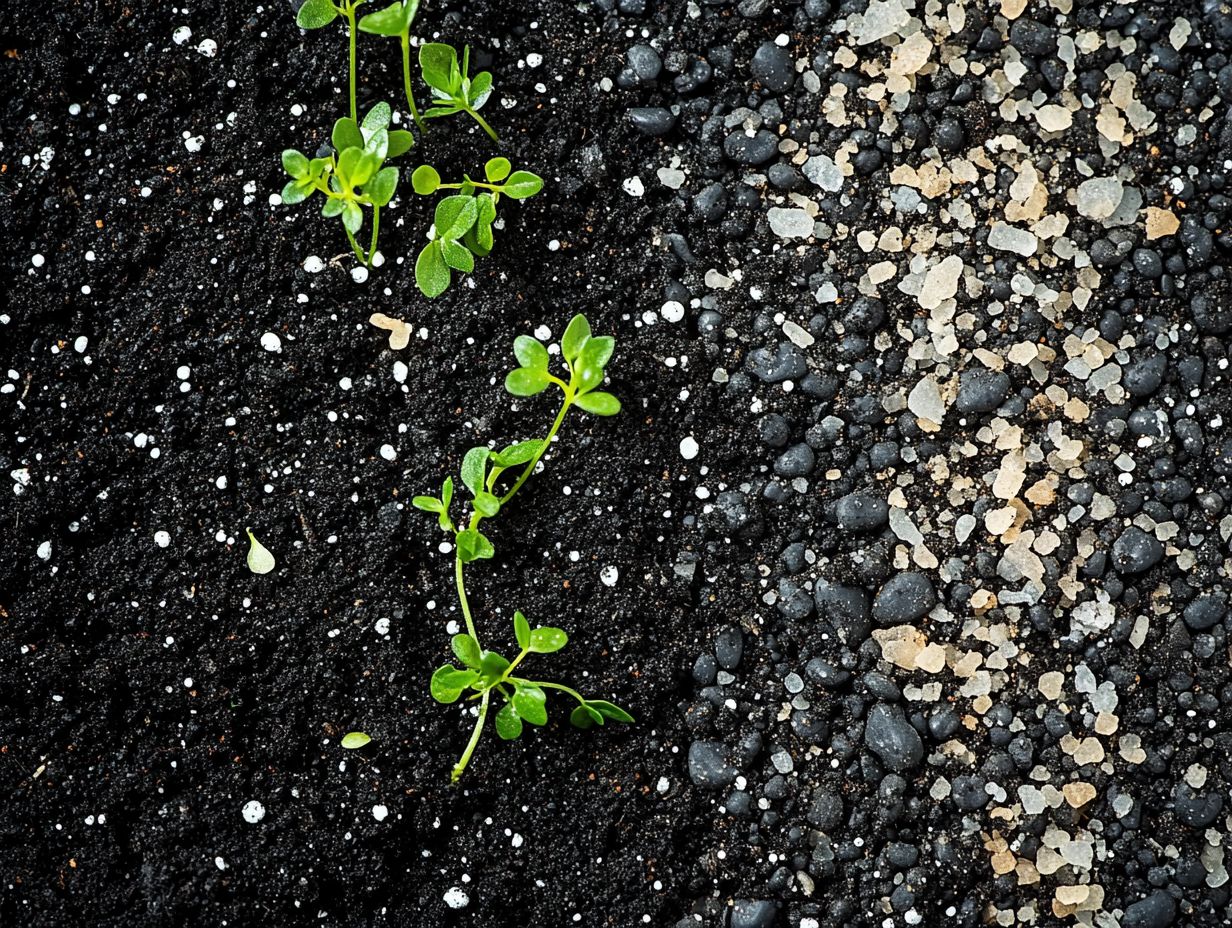
- Sand plays an important part in potting mix by improving drainage and aeration, essential for healthy plant growth.
- There are various types of sand that can be used in potting mix, each with unique characteristics and benefits.
- Proper ratios of sand in potting mix are crucial for different types of plants. Following best practices can lead to successful gardening experiences.
The Importance of Potting Mix
Think of potting mix as the secret ingredient to your blooming garden! It offers the essential nutrients and drainage that your plants need for thriving growth. A well-balanced potting mix fosters robust root development while ensuring optimal moisture retention and soil drainage critical factors for successful seed germination and planting.
Incorporating ingredients such as horticultural sand, peat moss, and organic matter enriches the texture and aeration of your mix. This contributes to lawn health and makes it well-suited for a diverse array of plants and gardening techniques.
What is Potting Mix?
Potting mix is a carefully mixed blend designed to enhance your container gardening experience. It ensures your plants receive the essential nutrients, proper aeration, and effective drainage they need for optimal growth.
This unique composition often features ingredients like peat moss, which retains moisture and creates a slightly acidic environment that many plants thrive in. Vermiculite, a lightweight mineral, helps with moisture retention, while perlite steps in to improve drainage, warding off root rot and fostering healthy root development.
Unlike traditional garden soil, which can be heavy and compacted, soilless mixes allow you to tailor your blend to specific plant types or conditions. Whether you re nurturing orchids that crave excellent drainage or cultivating vegetables that flourish in nutrient-rich environments, utilizing the strength of potting mix helps create ideal growing conditions that echo natural habitats, ultimately boosting plant health and productivity.
The Role of Sand in Potting Mix
Sand plays a crucial role in potting mix. It elevates soil structure, enhances drainage, and promotes aeration, all vital for ensuring healthy root growth in your container gardening endeavors.
How Sand Affects Drainage and Aeration
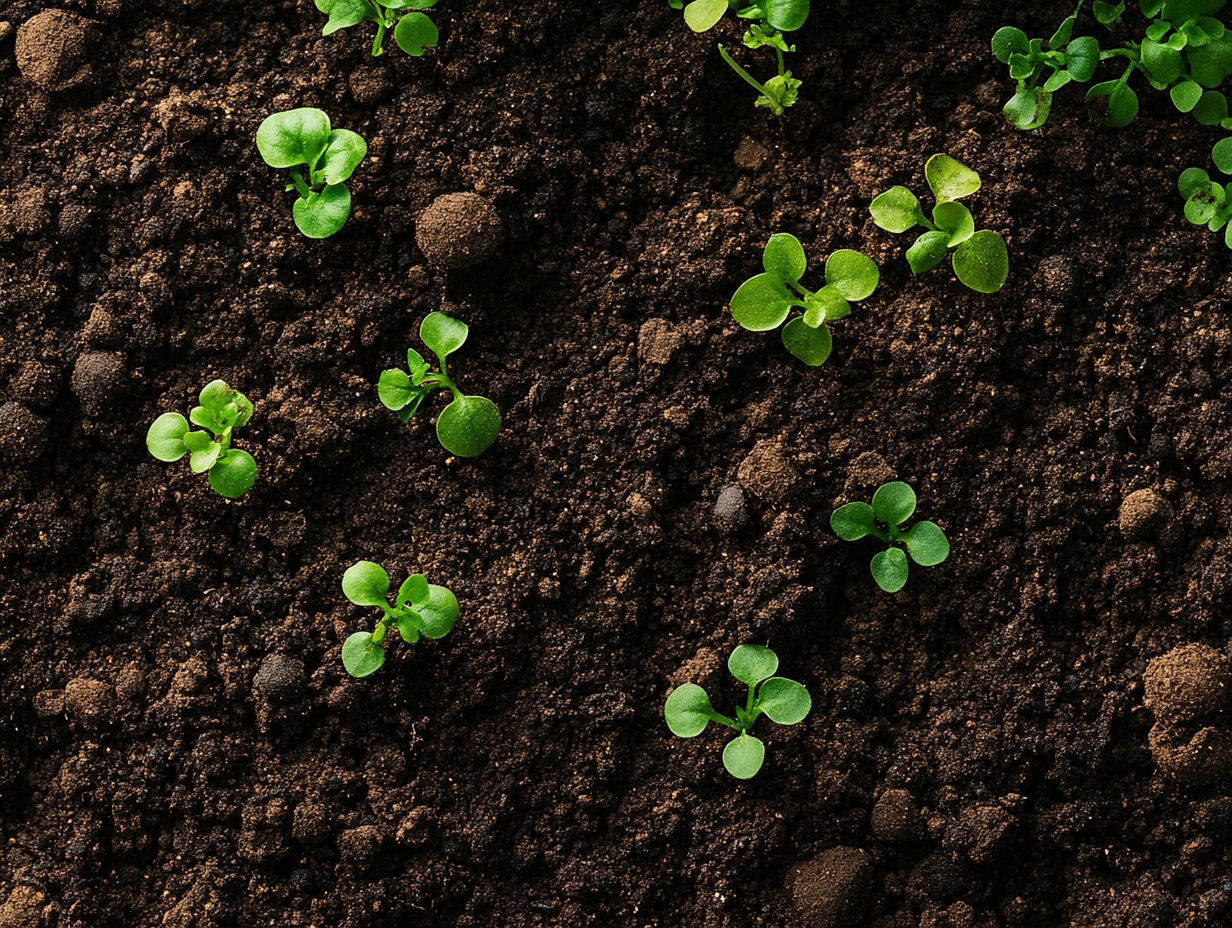
The inclusion of sand in your potting mix can make a remarkable difference in both drainage and aeration. It allows excess water to escape while still retaining the perfect amount of moisture for your plants.
This enhancement stems from the structure of sand particles. Their larger size compared to silt and clay creates necessary spaces and voids that facilitate airflow and prevent soil compaction. A well-balanced sandy mix creates an ideal environment that promotes rapid drainage while retaining essential moisture. For instance, succulents and cacti, which thrive in well-drained conditions, reap significant benefits from this type of soil.
To achieve the optimal sand ratio in potting mixes for these resilient plants, a common guideline is to use one part sand for every two parts of potting soil. This ensures that the roots receive the vital nutrients they need without getting trapped in stagnant water.
Types of Sand Used in Potting Mix
You can incorporate various types of sand into your potting mixes, each offering distinct properties that significantly enhance the overall effectiveness of your growing medium.
Ready to enhance your garden? Start crafting your perfect potting mix today!
Comparing Different Types of Sand
When you compare different types of sand for your potting mix, it s essential to consider their unique characteristics, such as grain size, texture, and drainage capacity. These factors significantly influence how well the sand supports plant growth by affecting moisture retention and aeration.
Horticultural sand is often finer in texture and enhances soil aeration while retaining some moisture, making it a fantastic choice for delicate plants. In contrast, builders sand has a coarser texture that improves drainage but may not hold enough moisture, which could be a challenge for more water-sensitive species.
Sharp sand is another option; it creates a well-drained mix that balances aeration and moisture retention. However, its coarser nature means it may not be suitable for every type of plant.
Understanding these properties helps you choose the right sand for your gardening projects, enhancing your gardening methods and success.
Proper Ratios for Sand in Potting Mix
Establishing the right ratios of sand in your potting mix is crucial for optimizing conditions suited to various plant types. Paying attention to these details will supercharge your gardening results, ensuring your plants thrive.
Recommended Ratios for Different Plants
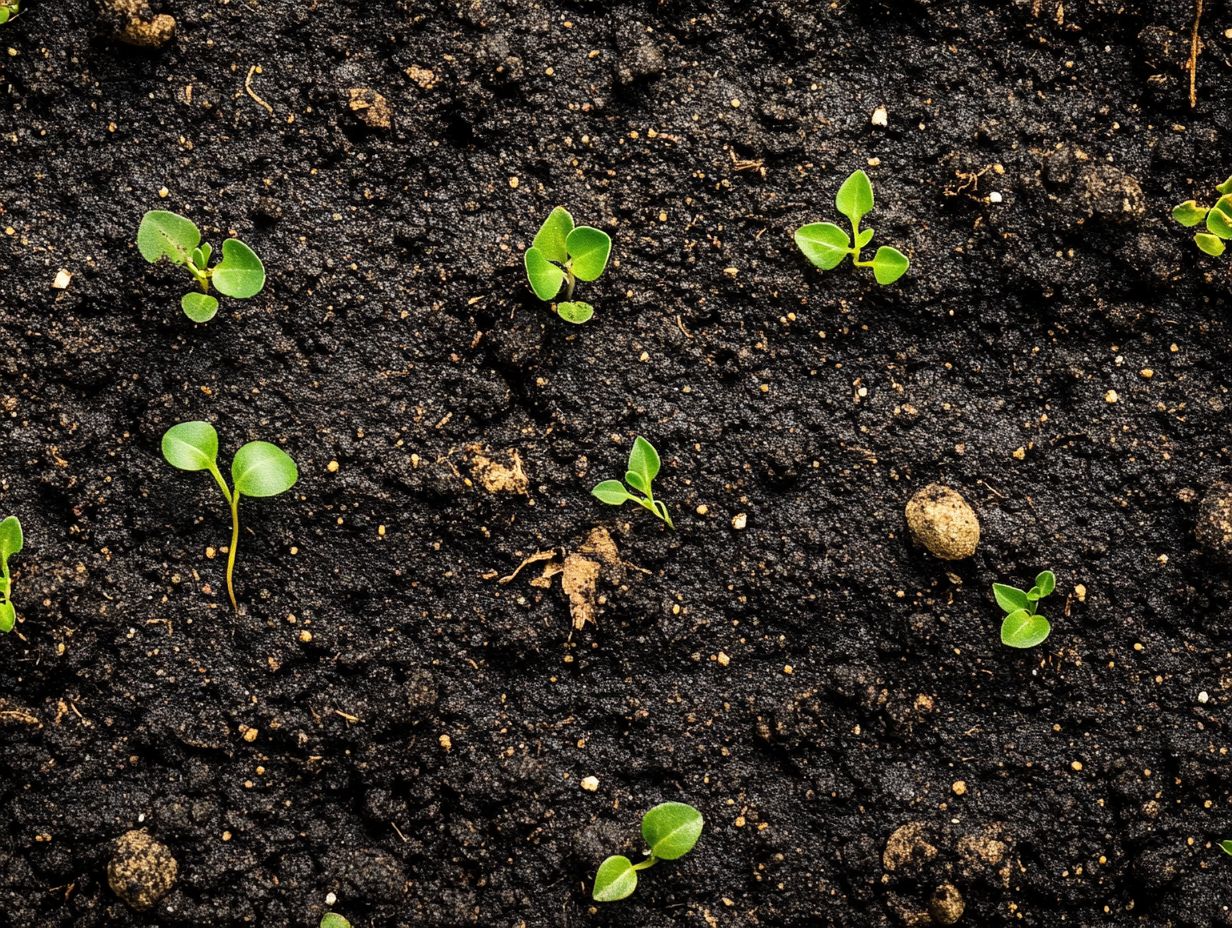
Different plants require specific ratios of sand in potting media to thrive. If you re nurturing succulents, a higher sand content is essential for optimal drainage due to its coarse texture.
A well-balanced mix for succulents typically includes 50-70% sand. This allows excess water to escape quickly, helping to prevent root rot while retaining just the right amount of moisture.
If you re caring for tropical plants that prefer a moisture-retentive environment, aim for a sand ratio of about 30-50%. This maintains adequate aeration while keeping the soil sufficiently damp.
Flowering varieties usually thrive with a moderate sand content of around 40%, promoting healthy root development and encouraging vibrant blooms. Successful potting mixes that include coarse sand, peat, and perlite can significantly boost growth and resilience across these plant categories.
Tips for Using Sand in Potting Mix
Adding sand to your potting mix greatly boosts your plants’ health, but it’s crucial to follow best practices and avoid common pitfalls for the best results.
Best Practices and Common Mistakes to Avoid
Following best practices when incorporating sand into your potting mix is key to cultivating healthier plants. Avoiding common mistakes can save you both time and resources.
Choosing the right type of sand is essential; opt for coarse sand, which significantly improves aeration and drainage, while finer types can lead to compaction. When mixing your potting soil, aim for an ideal ratio of one part sand to two parts peat or compost to ensure optimal growth.
To test drainage efficiency, fill a pot with your mixture and water it, observing how quickly the water flows through. Be mindful of common pitfalls, such as using too much sand or neglecting to incorporate organic matter, as these can hinder plant development.
Incorporating well-decomposed organic matter enhances moisture retention and nutrient availability, nurturing healthy plants that flourish in their growing environment.
Frequently Asked Questions
What is the role of sand in potting mix?

Sand serves as an important component in potting mix, providing aeration and drainage for plant root systems, ultimately contributing to root growth.
Can I use any type of sand in potting mix?
No, it is important to use horticultural sand in potting mix. It is specially washed and sterilized for use in gardening, ensuring optimal soil drainage.
Start experimenting with different sand types today and watch your plants thrive!
How much sand should be added to potting mix?
The amount of sand you should add to potting mix varies based on the plants’ drainage needs. A good starting point is one part sand to two to three parts potting mix.
What happens if there is too much sand in potting mix?
Too much sand can make the mix too dry. This prevents it from holding nutrients and water, which leads to poor plant growth.
Is sand necessary in all potting mixes?
No, not all potting mixes require sand. For example, succulents thrive in a mix that drains well without sand.
Can I substitute sand with other materials in potting mix?
Yes! You can use materials like perlite, vermiculite, or coconut coir to improve aeration and drainage. These options may offer different levels of weight and stability compared to sand.

